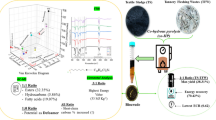Abstract
In our previous work, the primary sludge from wastewater treatment plants was shown to contain a considerable amount of cellulose (about 20%, based on suspended solids) owing to the discharge of toilet paper. For the purpose of using the cellulose as a biomass resource, this study examined a simple method for its recovery. When fibrous cellulose was suspended in 0.3% sulfuric acid and autoclaved at 130°C for 60 min, 85%–88% of the initial solids remained without dissolving. Under these conditions, an activated sludge sample not containing cellulose was strongly hydrolyzed and only 7% of the initial solids remained. The prescribed amounts of cellulose added to the activated sludge sample were quantitatively recovered by the autoclaving treatment. In the treatment of primary sludge containing >20% cellulose, residual solids with relatively high levels of cellulose (>69%) could be obtained. The results indicate that the method proposed here could recover cellulose practically from waste sewage sludge for biomass utilization.
Similar content being viewed by others
Author information
Authors and Affiliations
Additional information
Received: July 17, 2000 / Accepted: July 4, 2001
Rights and permissions
About this article
Cite this article
Honda, S., Miyata, N. & Iwahori, K. Recovery of biomass cellulose from waste sewage sludge. J Mater Cycles Waste Manag 4, 46–50 (2002). https://doi.org/10.1007/s10163-001-0054-y
Issue Date:
DOI: https://doi.org/10.1007/s10163-001-0054-y




